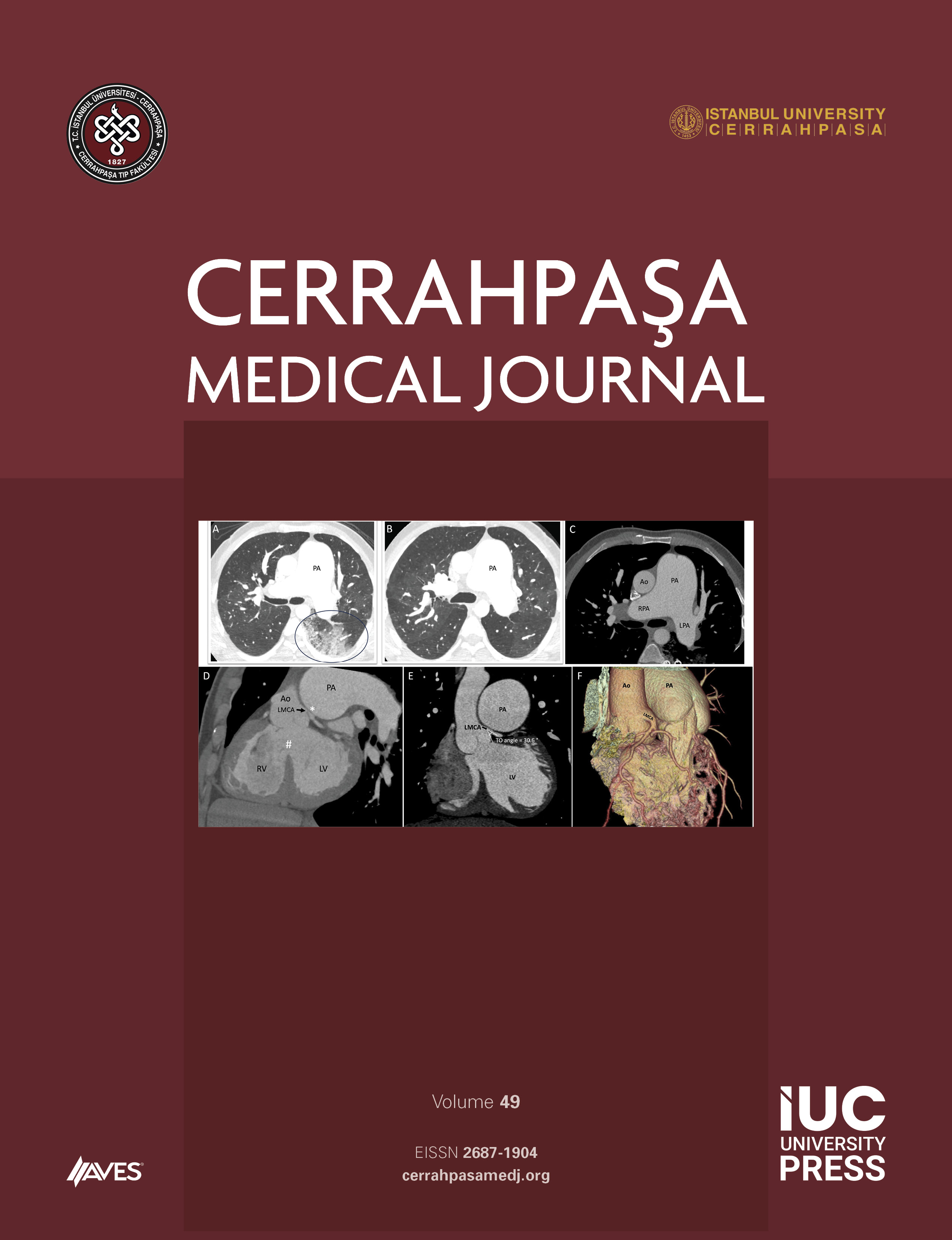Objective: This study investigated the influence of ectopic and pituitary Cushing’s syndrome, diagnosed by sampling the inferior petrosal sinus and cavernous sinus, on comorbidities and clinical complications.
Methods: Medical records of patients with Cushing’s syndrome who presented to the Endocrinology, Metabolism, and Diabetes Clinic of İstanbul University-Cerrahpaşa, Faculty of Cerrahpaşa Medicine between 2010 and 2020 and underwent inferior petrosal and cavernous sinus sampling were reviewed. Sociodemographic data, clinical signs and symptoms, laboratory parameters, comorbidities, medical and surgical treatments applied, current disease status, and mortality data were recorded from all patients. Two groups were defined for the study: Cushing’s disease and ectopic Cushing’s syndrome. Data were compared between these 2 identified groups.
Results: This study was conducted with 106 patients. Ninety-four (88.7%) of the patients were women. The mean age at diagnosis was 52.1 ± 13.7 years. Twenty patients had ectopic Cushing’s syndrome, and 86 patients had Cushing’s disease. There were no statistical differences in age, sex, and follow-up time in the 2 groups. Basal cortisol level and cortisol level after a 2 mg low-dose dexamethasone suppression test were higher in ectopic Cushing’s disease than in Cushing’s disease (P = .04 and .05, respectively). Complications and comorbidities correlated with hypercortisolemia indicators. Body mass index was lower in ectopic Cushing’s syndrome than in Cushing’s disease (P < .001). There were no differences between groups in tests assessing glucose and lipid metabolism. Hypertension was present in 62.8% (n = 54) of patients with Cushing’s disease. This rate was significantly higher than in ectopic Cushing’s syndrome, as hypertension was significantly higher in patients with Cushing’s disease than in patients with ectopic Cushing’s syndrome (62.8% vs. 40%, P = .04). In terms of other comorbidities, the groups were similar. During the follow-up period, ectopic foci were detected in 3 patients with ectopic Cushing’s syndrome, while no foci were found in the other patients. Forty-seven of 86 patients with pituitary Cushing’s syndrome had adenoma on magnetic resonance imaging of the sella. All patients underwent hypophysectomy.
Conclusion: The clinical presentation in ectopic and pituitary Cushing’s syndrome is determined by the cortisol level and the duration of the disease. In ectopic Cushing’s syndrome, the acute or insidious onset of the disease affects the “clinical presentation,” complications, and comorbidities depending on the underlying cause.
Cite this article as: Kara Z, Demir AN, Sulu C, Kadıoğlu P. Differences in the clinical presentation of patients with adrenocorticotropic hormone–dependent cushing’s syndrome. Cerrahpaşa Med J. 2024;48(1):8-14.



